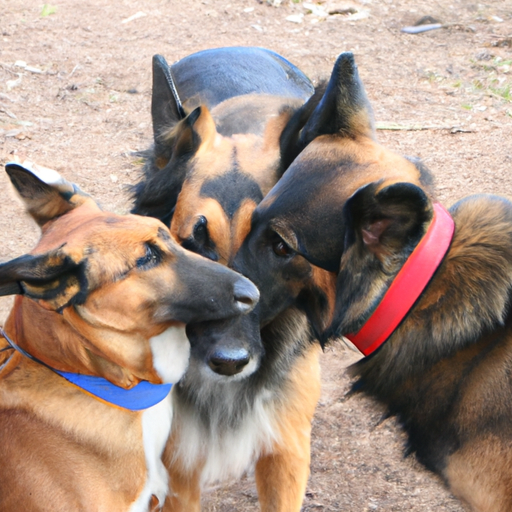Understanding Dog Behavior
As you observe your canine friend, you might notice that sometimes they show their teeth while playing. This can be worrying, especially if you’re unsure whether it’s a sign of aggression or merely a playful gesture. In this section, we’re going to unravel the mystery behind this behavior.
Dogs are social creatures with a language all their own, and showing teeth can mean a variety of things. It could be a warning signal, a sign of submission, or a part of playful behavior. Understanding the context and accompanying behaviors is crucial to interpret your dog’s actions correctly.
- Playful Grinning: Some dogs have a unique habit of showing their teeth when they’re happy or excited. This is often accompanied by a wagging tail and relaxed body language.
- Aggressive Snarling: Unlike the playful grin, an aggressive snarl will usually include furrowed brows, tense body language, and possibly growling. This is a warning sign that your dog is feeling threatened.
- Submissive Smiling: Some dogs show their teeth as a sign of submission. This will typically come with other submissive behaviors like avoiding eye contact or crouching low.
How to Respond
Understanding why your dog is showing teeth is only half the battle. The next step is knowing how to respond appropriately.
- Encourage Playful Grinning: If your dog is showing teeth out of happiness or excitement, encourage this behavior. It’s a sign that your dog is comfortable and enjoying their playtime.
- Discourage Aggressive Snarling: If your dog is showing teeth out of aggression, you should discourage this behavior. A firm “no” or “stop” can help here, but if the behavior continues, you might need to consult a professional trainer or behaviorist.
- Respect Submissive Smiling: If your dog is showing teeth as a sign of submission, it’s essential to respect their feelings. Avoid further intimidating them and provide a gentle, reassuring response.
Training Your Dog Properly
Training can play a significant role in how your dog behaves during playtime. A well-trained dog will understand the boundaries and know how to express themselves appropriately. Here are some tips to keep in mind:
- Establish Boundaries: Make sure your dog knows what’s acceptable and what’s not during playtime.
- Reward Good Behavior: Positive reinforcement goes a long way. Reward your dog for playing nicely and not showing aggressive behavior.
- Consistency is Key: Be consistent in your training. This helps your dog understand and remember the rules.
| Training Tips | Description |
|---|---|
| Start Early | The earlier you start training your dog, the better. |
| Stay Consistent | Dogs learn best with consistent, repetitive training. |
| Use Positive Reinforcement | Rewarding good behavior is more effective than punishing bad behavior. |
Recognizing Play Aggression
Sometimes, what starts as play can turn into aggression. This typically happens when a dog gets overly excited or if they haven’t learned proper play etiquette. Recognizing play aggression in its early stages can help prevent any issues.
- Look for signs of tension: If your dog’s body language becomes tense and rigid, it’s a sign they might be shifting from play to aggression.
- Listen for growling: While some growling can be playful, intense and continuous growling is usually a sign of aggression.
- Monitor their behavior: If your dog starts to play rougher than usual, it might be a sign of play aggression.
FAQ
Q1: Is it always bad when a dog shows teeth?
No, showing teeth can signify various things, including happiness, excitement, submission, or aggression. It’s essential to pay attention to the context and other body language.
Q2: How can I discourage aggressive behavior in my dog?
Consistent training, establishing boundaries, and using positive reinforcement can help discourage aggressive behavior. If the behavior persists, consider consulting a professional.
Q3: My dog shows teeth when meeting new people. Should I be worried?
It depends on the context and other body language. If it’s accompanied by aggressive signals like growling or tense body language, it’s a cause for concern. However, some dogs might show teeth out of nervousness or excitement.
Q4: What should I do if my dog shows signs of play aggression?
It’s essential to intervene before it escalates. Calmly remove your dog from the situation and give them time to calm down.
Remember, understanding your dog’s behavior takes time and patience. But, with careful observation and consistent training, you can ensure a happy and healthy relationship with your furry friend.



